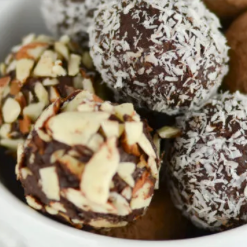
TRY OUR LOCAL OTTAWA HOME DELIVERY
TRY OUR LOCAL OTTAWA HOME DELIVERY

Tea consumption has legendary origins dating back more than 4,000 years. Green tea is made from the unfermented leaves of Camellia sinsesis (the same plant that gives us black and oolong teas). It originated in Southeast Asia, around the confluence of the lands of northeast India, north Burma, the southwest Yunnan and Sichuan provinces of China and Tibet. Over the centuries, the plant was introduced to more than 52 countries.

Countless varieties of green tea have been developed in the countries where it is grown, and these varieties (all cultivars of the same species, Camellia sinensis) can differ markedly in aroma, color and taste due to variable growing conditions, horticulture, production processing and harvesting time.
Green tea is commonly harvested three times per year. The first flush, which brings the best-quality leaves, takes place in late April to early May. The second harvest usually takes place from June through July and the third picking occurs in late July to early August. Once harvested, green tea is processed using either artisanal or modern methods. Sun-drying, basket or charcoal firing and pan-firing are common artisanal methods, while oven-drying, tumbling and steaming are common in the modern industry. Once processed, green teas are stored under low humidity refrigeration and then go through a final firing before blending, selection and packaging. The partially processed, refrigerated leaves will be re-fired throughout the year as they are needed, giving the green teas a longer shelf-life and better flavor.
Chinese green teas are made from over 600 different cultivars of the Camellia sinensis plant, giving a profuse variety of regional teas. Chinese green teas are traditionally pan-fired, unlike the Japanese steaming process. Due to these different production processes, Chinese teas are said to have a more “earthy” taste than Japanese teas. In China, Zhejiang Province is home to the most famous of all teas, Xi Hu Longjing, as well as many other high-quality green teas. Longjing (literally, “dragon well”), probably the most well-known green tea in China, originates in Hangzh, the capital of Zhejiang Province. It is pan-fired and has a distinctive flat appearance.
Green tea is ubiquitous in Japan and is commonly known simply as “tea.” Japanese green tea is made from the Yabukita cultivar. Japanese steamed green teas have a more “vegetative” or “leafy” taste, with the exception being hojicha, a Japanese roasted tea. Japanese green teas are categorized by the age of the leaves, with young leaves called sencha. The large, mature leaves are used for bancha, which is the most common tea in Japan. Bancha is a good tea with a nice aroma, pleasant strong, astringent taste and a sweet aftertaste.
Here at Yogi, we make 11 delicious products with green tea. Made with the finest organic green tea leaves from China, India and Sri Lanka, our green teas are purposefully formulated with herb and spice combinations with both flavor and purpose in mind. Click here to learn more about our Green Teas!